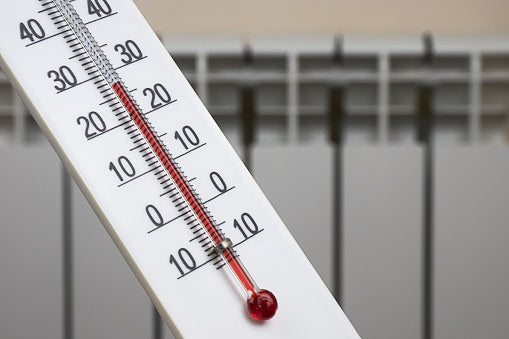
What is a Room Thermometer?
The digital room thermometer is a popular piece of temperature-measurement equipment that significantly improves and updates traditional liquid-based thermometers.
Advances in clinical research popularised the conventional liquid mercury thermometer in the 17th and 18th centuries. However, it remained essentially unchanged as our go-to temperature-reading device until the 1930s, when commercially viable thermistors were discovered. Yet, if we examine the early observations of Ancient Greek academics with their primitive tubes of water and air, the essential components of basic thermography had been widely recognised for hundreds, if not thousands, of years by that time.
Modern digital room thermometers and probes, on the other hand, work on different (but related) thermographic principles. As a result, they provide many significant advantages over conventional liquid-in-glass thermometers, making digital room thermometers much more appropriate for a broad range of companies and applications.
What is a digital room thermometer, and how does it work?
Several different kinds of digital room thermometer sensors are available today, the most common of which is a 'resistance temperature detector' (RTD). Because the electrical resistance of metal changes with temperature, this kind of thermometer works on that premise.
Other kinds of digital room thermometer sensors include thermocouples and thermistors, which are both immediately recognisable as variants of digital thermometers with probes, even though each type works on similar but distinct thermodynamic principles.
An RTD sensing element is a kind of thermistor. They are built using electrodes made of several types of suitable metals in a probe-style tip, each having a stable, repeatable, and measurable resistance-versus-temperature relationship.
When an electrical voltage is applied across these electrodes from a power source (typically a simple battery in modern portable devices), the resistance it encounters is affected by how hot or cold the metals are.
By detecting the resultant current flowing between electrodes of a particular metal, an on-board microprocessor may then transform this value into a very accurate measurement of exact temperature at the element and show it numerically on a screen (often platinum, but copper or nickel are also viable, if less versatile, options). This is usually located on the tool's body, as seen in most LCD digital thermometers.
What are digital room thermometers used for?
Digital thermometers offer a wide range of uses in both professional and household settings. They provide accuracy and speed of temperature reading in almost any scenario where a traditional room thermometer would be helpful and suitable for a wide variety of circumstances where liquid-in-glass counterparts would be useless.
Most circumstances or settings where a liquid thermometer would fail would have a digital counterpart to perform the job perfectly.
When it comes to digital thermometers, it's critical to remember to choose the suitable device for the task. While certain brands and designs are intended to be multi-purpose probes, other digital room thermometer setups are mainly designed to monitor food temperatures. In contrast, others may be constructed exclusively for collecting body temperature readings in a clinical setting.
When may a digital room thermometer be used?
Products intended for industrial application are often more ruggedly constructed and better suited for use in a range of potentially challenging or hazardous environments. They may be designed to operate with a wide range of probe types, including thermistors and thermocouples. They often include countdown timers, rubberised IP-rated housings, lighted displays, and non-sparking material constructions.
Industrial digital room thermometers are often used for HACCP settings, heat and hot water system testing, air conditioning and ventilation, refrigeration, manufacturing, and monitoring of organic or oxidising surfaces.
Our GTH 200 Air Room Thermometer made by GREISINGER is one example that would be suitable for high-precision measurement in an industrial environment.

